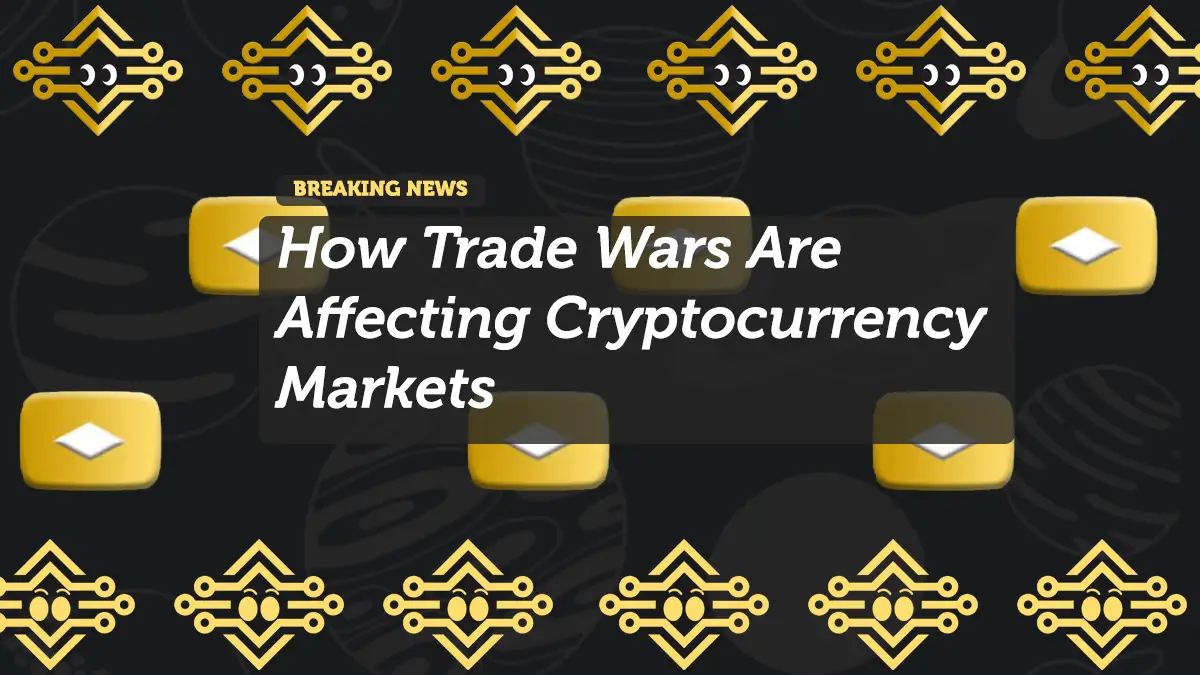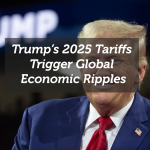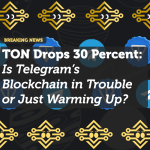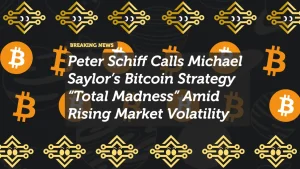
How Trade Wars Are Affecting Cryptocurrency Markets
Global trade wars are no longer just about steel, soybeans, and semiconductors—they’re now affecting digital currencies too. As trade tensions intensify, especially between the United States, China, and the European Union, ripple effects are shaking the crypto market in real time.
From price drops in Bitcoin to rising operational costs for crypto miners, the connection between macroeconomic policy and decentralized finance is growing stronger—and more complex.
China’s Aggressive Tariff Escalation
April 4, 2025: The First Strike
In response to the U.S. increasing tariffs on Chinese imports, China slapped a 34 percent tariff on all U.S. goods, effective April 10. Markets reacted swiftly.
- Bitcoin dropped 3 percent within hours of the announcement.
- Prices briefly fell below $82,000, highlighting crypto’s sensitivity to global economic policy.
April 9, 2025: The Follow-Up Blow
Just days later, China doubled down, raising its retaliatory tariffs to a staggering 84 percent. This escalation sent waves of uncertainty through financial and crypto markets alike.
The European Union’s Calculated Pause
While China has taken an aggressive stance, the European Union opted for diplomacy—at least temporarily.
- The EU announced a 90-day delay on retaliatory tariffs targeting $23 billion in U.S. goods.
- This aligns with the U.S.’s temporary suspension of 20 percent tariffs on EU imports.
The aim is to cool tensions and allow time for trade negotiations, offering a temporary sense of stability—though the pause may prove fragile.
The Crypto Market Reaction: Volatile and Vulnerable
Market Snapshot as of April 10, 2025:
- Bitcoin (BTC): $81,770.00
Up $5,621 in a single day, representing a 7.38 percent gain. - Despite recent gains, volatility remains high, with price swings reflecting global policy announcements.
Mixed Investor Sentiment
While some view Bitcoin as a safe-haven asset during economic turbulence, others are skittish:
- Risk-averse investors are moving capital into cash or gold, reducing crypto demand.
- Others are buying the dip, betting on Bitcoin’s long-term inflation hedge status.
Mining Sector on Edge
The crypto mining industry is directly feeling the heat:
- Many essential mining components—especially ASIC miners and GPUs—are manufactured in China.
- With new tariffs driving up costs, U.S.-based miners could face:
- Supply chain disruptions
- Longer lead times
- Reduced profit margins
- Potential shutdowns if operational expenses become unsustainable
Why Trade Policy and Crypto Are Now Intertwined
Historically, cryptocurrencies were seen as immune to government decisions. But that narrative is evolving:
1. Global Asset Class Status
Bitcoin and other major tokens are now seen as alternative assets, just like equities and commodities. As such, they:
- React to macroeconomic headlines
- Get caught in institutional risk cycles
- Are included in diversified portfolios, which get adjusted in response to trade and fiscal policy
2. Supply Chain Dependencies
Blockchain might be decentralized, but hardware isn’t. Miners, validators, and even developers rely on physical infrastructure:
- Data centers
- Network servers
- Specialized chips and machines
These all flow through international supply chains, now disrupted by tariffs and trade barriers.
3. Regulatory Spillover
As trade tensions rise, so does regulatory scrutiny—including on digital assets:
- Governments may introduce capital controls or transaction monitoring under the guise of national security.
- International crypto transactions could come under greater surveillance.
What Comes Next? Scenarios to Watch
If the Trade War Escalates Further
- More crypto price drops due to risk-off sentiment
- Increased mining centralization if smaller players exit due to higher costs
- Rising institutional skepticism on short-term crypto gains
If a Trade Truce Emerges
- Short-term price bounce as markets regain confidence
- Renewed institutional interest in crypto hedging strategies
- Stronger correlation between crypto and traditional risk assets
Final Word: Global Trade Policy Is Now a Crypto Factor
The April 2025 trade tensions are proving that crypto markets can no longer be analyzed in a vacuum. The sector’s increasing integration into the global economy means it’s now subject to the same political and financial forces that govern stocks, bonds, and commodities.
For crypto investors and builders alike, understanding macroeconomic trends—especially trade policy—is becoming essential.
Want to dive deeper? I can break down how these trade tensions may impact Ethereum gas fees, Solana-based DeFi platforms, or altcoin market cycles. Just let me know.
















